- Due to the late hour of arrival, 30 hours of travel, 10 hour time difference, and full future agenda, we slept until 1:00 pm.
- There were reports of supposedly loud snoring but I didn’t hear anything.
- Sarah fixed a fabulous “breakfast” of eggs extraordinaire.
- Coffee is a religious experience for Bruce. I’m a convert.
- Anna arrives. Anna is Ezra Ministries’ trusted accountant and administrator in Kiev. She and Bruce have some financial catching up to do.
- Today we will tour Father’s House in Kiev. More on that later. First, some background on Ukraine and Kiev.
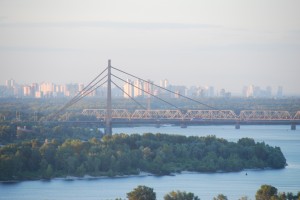
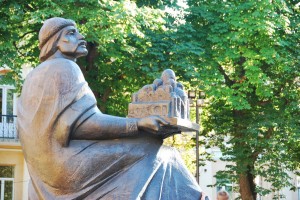
- Ukraine was under Russian governance, and then Soviet rule after the Bolshevik revolution of 1917.
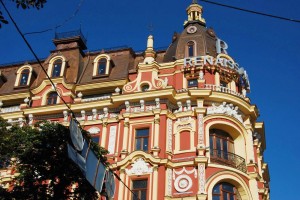
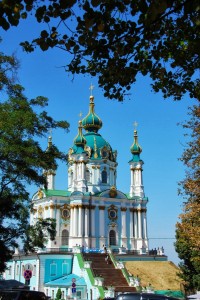
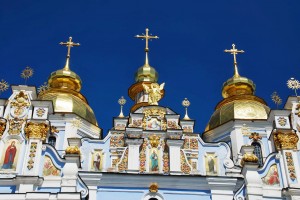
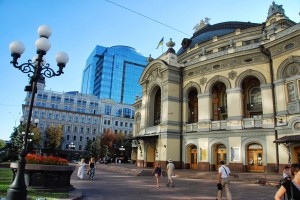
- Ukraine’s new independence since the end of the Cold War in 1991 has been shackled by corruption and Mafia influence. The citizenry sees little distinction between governing officials and the Mafia.
- To add to these challenges, Ukraine has had to rebuild its economy essentially from scratch since the end of Soviet control. Ukraine was Russia’s food source. Its climate and geography are comparable to the upper Midwest in the US, and so is its farming emphasis. Stalin exploited this resource, killing some 2 million Ukrainians to redirect the food supply to Russia.
- When Soviet control ended in 1993, Ukraine was left to organize an independent government for the first time in 120 years, and restart its economy from scratch, without infrastructure, seed, equipment and working capital.
- Ukraine’s capital, Kiev, seems to be a forest of housing midrises.
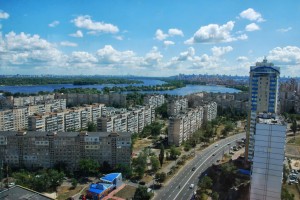 Some projects are huge, perhaps 3,000 units. Many are older, decrepit Soviet era mass housing projects. Exteriors are gray and decaying. Laundry flies from the windows, and individual air conditioner units are randomly mounted on the exteriors.
Some projects are huge, perhaps 3,000 units. Many are older, decrepit Soviet era mass housing projects. Exteriors are gray and decaying. Laundry flies from the windows, and individual air conditioner units are randomly mounted on the exteriors.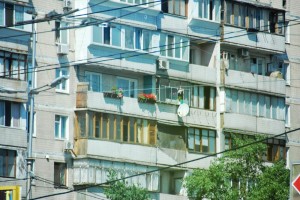

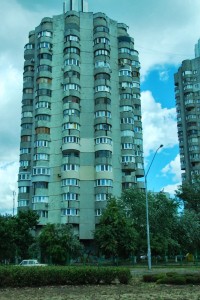 Other projects are newer and nicer, with contemporary stucco and red roofs. The architecture is modern but often tips its hat to eastern European historical influences.
Other projects are newer and nicer, with contemporary stucco and red roofs. The architecture is modern but often tips its hat to eastern European historical influences.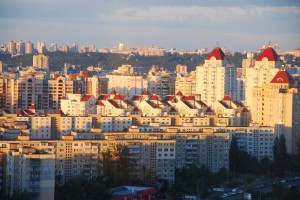
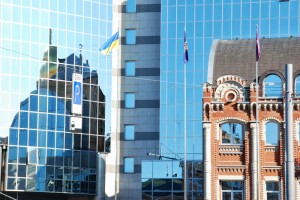 Street life is vibrant. In general it feels relatively safe to be on the streets at night. Traffic moves pretty fast.
Street life is vibrant. In general it feels relatively safe to be on the streets at night. Traffic moves pretty fast.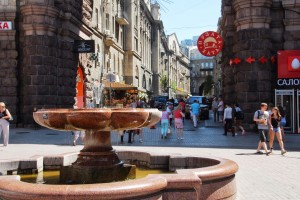
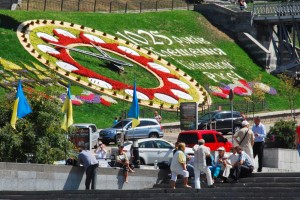
There are vast river fronts with delightful beaches and marinas.
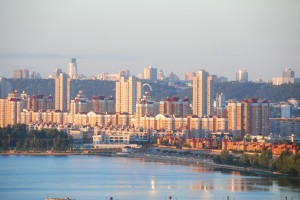
There is little sign of employment centers. Small shops and strip centers are everywhere. There are a few larger retail concentrations.
Part of the river front has the expected industrial function. The city center includes the old historic city, and a financial and banking center. Overall the business and commercial components of the city seem disproportionately small compared with the sprawl and density of a residential population of some 5 million people. Yet there does not seem to be much unemployment. There are US and European employers, and opportunities to open mom and pop stores.
There is a migration from rural to urban areas of Ukraine, especially to Kiev which is the country’s center, geographically, politically, economically, and culturally. This has led to high prices for real estate, and many new housing developments.
Some of the new housing projects are huge multifamily projects in the city; others are subdivisions at the city’s perimeter, creating suburbs, and leading to congested traffic commutes. Kiev is experiencing the growth and development experienced in many US cities in the middle of the 20th Century.
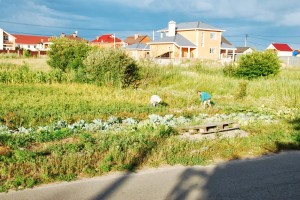
The housing price pressure, however, does not reflect pricing over all. Food and commodities we sampled cost about half to two-thirds of what would be expected in the US.
For more pictures of Kiev click here.
Caring for Kiev’s abandoned, abused and orphaned children has evolved much over the past 15 years. As of 1996, there was no systematic care for children at risk, certainly not by the government, and to this writer’s knowledge not by any NGO or charity.
Children in crisis came from homes afflicted by alcoholism, drug abuse, prostitution, physical and sexual abuse, abandonment, neglect, and combustible combinations of these. These intolerable conditions made life on the street look like a better alternative to many kids, and so either they fled there or were abandoned there.
Kiev is bitter cold in the winter; remember its geography comparable to the US upper Midwest. Shelter for the kids, if it could be found at all, might be under bridges or in doorways. Another resort to warmth by the kids, though incredibly toxic and addicting, was often sniffing glue, which temporarily raises the body temperature while destroying the life. Kids formed street gangs from young ages, prostituted themselves, and lived on street crime.
In the late 1990s street kids were everywhere. Today kids on the street are almost unknown. The reason for this is the story of the work done through Ezra Ministries and the Father’s House. The needs are still profound; but the kids in need and at risk are now more often still in abusive homes, or in the government’s shelter. Many have been placed in adoption, or are being cared for in private group homes. More on this later.
After a very long day, Bruce, George, Sarah and I relaxed at dinner at Oliva, a delightful Italian restaurant with remarkably good prices.
Paying the bill becomes a comical exercise that will be repeated several times for the next week. The concept is Bruce, George and I simply want to split the entire bill three ways. This consternates the wait staff. They believe they must precisely allocate individual food and drink items into three equal checks rather than just split the total. We work it out but will replay this cultural divide at every restaurant meal.
The first two days in Kiev will be tours of Father’s House, the government’s children’s center, “Myakosvago,” two home visits where there are children at risk, and travel to the children’s camp in northern Ukraine.
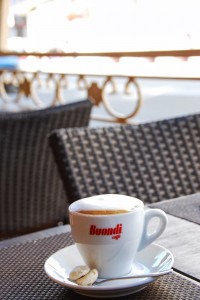 Thankful for the coffee religious experience.
Thankful for the coffee religious experience.
duane horning
notes from a sojourner

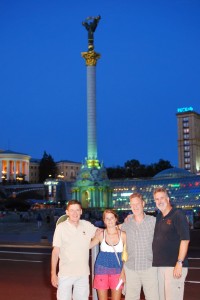
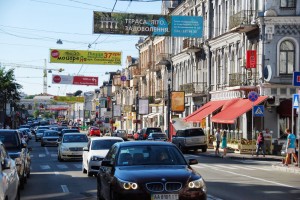
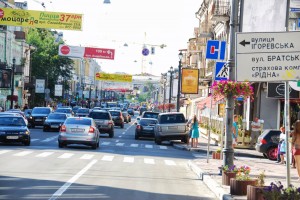
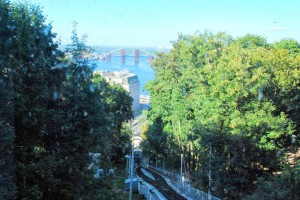
Great post. Love the photos..thanks for taking the time to do this. I am learning so much!